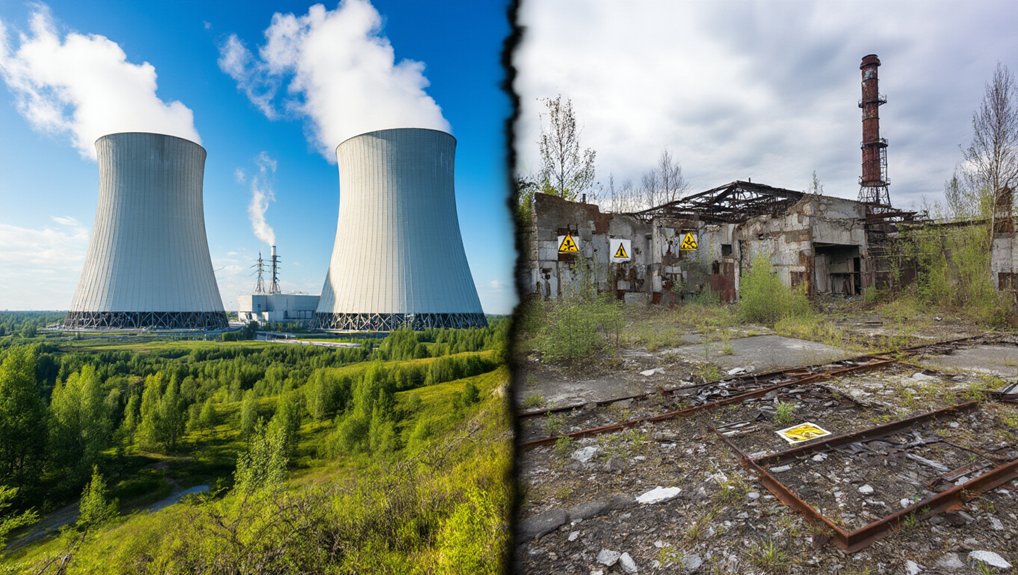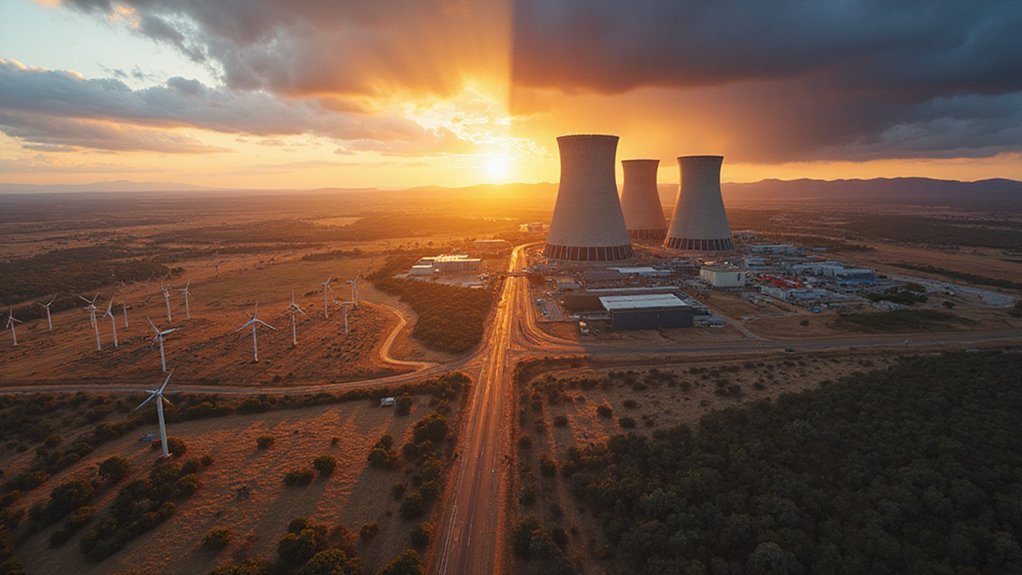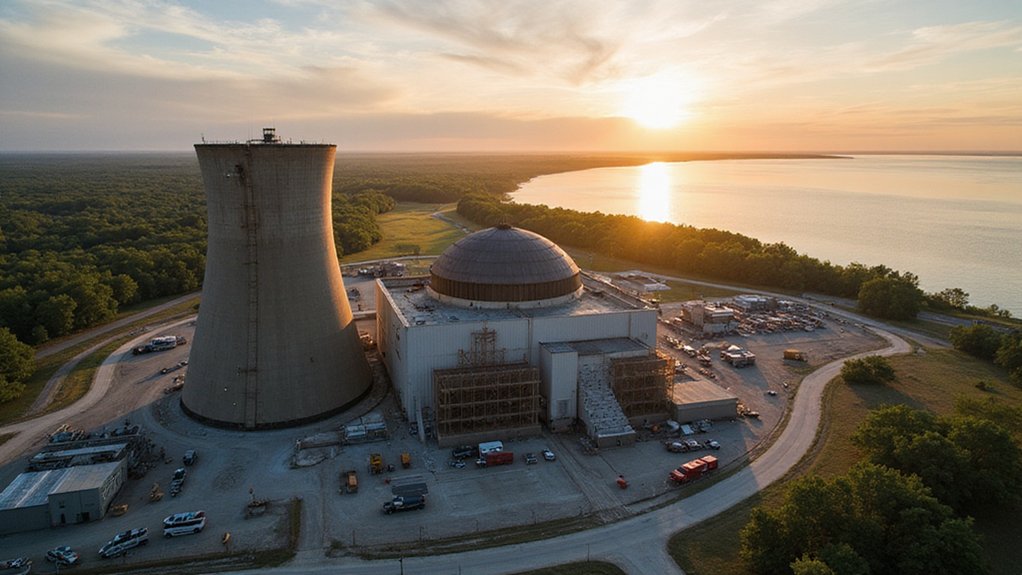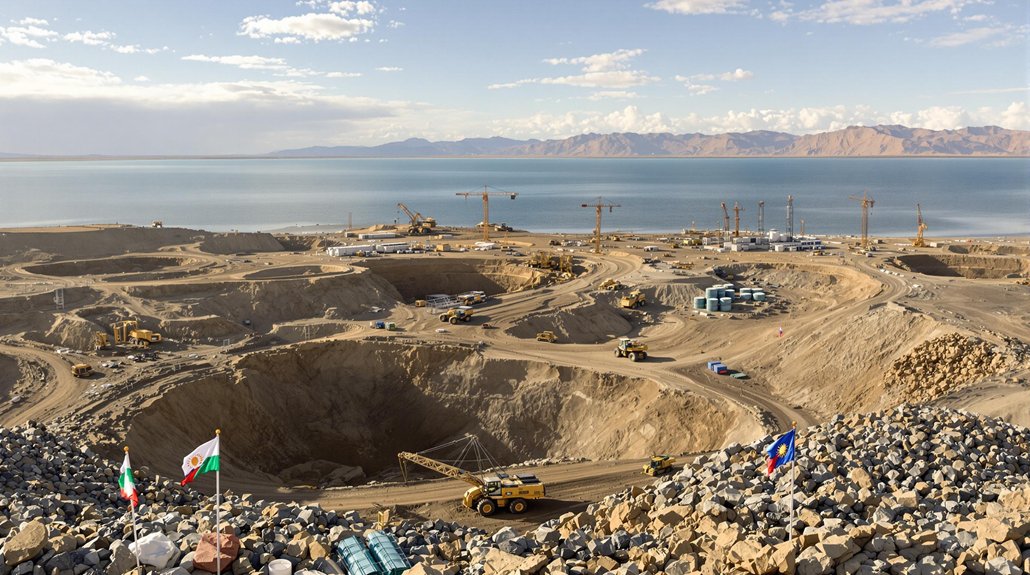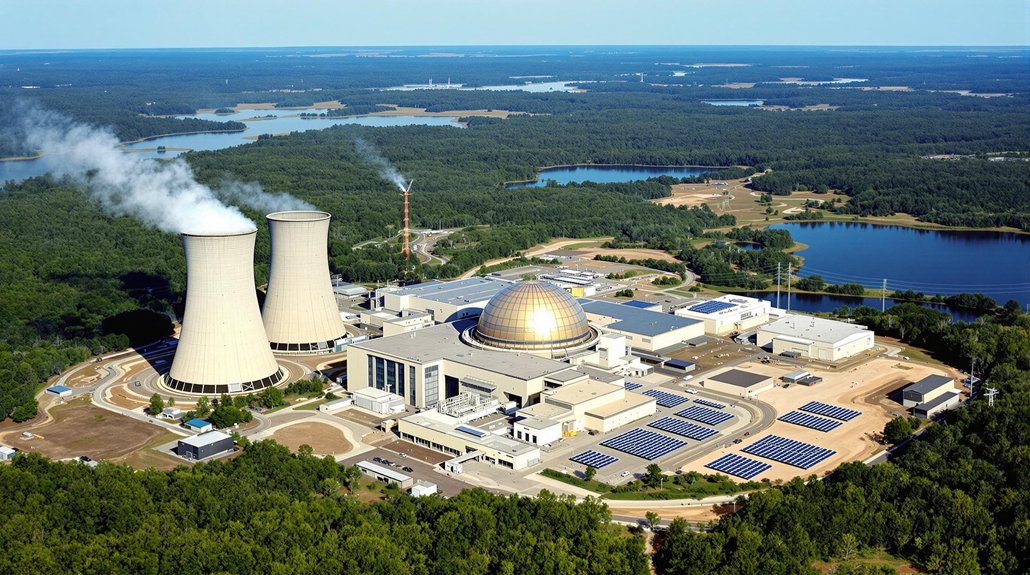Nuclear Power: Clean Energy Savior or Radioactive Threat to Our Future?
How can a single technology be both humanity’s climate savior and its potential destroyer? Nuclear energy sits at this bizarre intersection, supplying about 10% of global electricity while preventing a staggering (60 gigatonnes) of CO2 emissions over five decades. Not bad for a technology that makes people nervous.
The climate math looks simple. Nuclear plants run 24/7, churning out electricity without spewing greenhouse gases. Rain or shine, day or night—unlike those fickle solar panels and wind turbines that work only when nature cooperates. A nuclear plant can operate for nearly two years without refueling. Try that with coal. Colorado recently redefined clean energy to include nuclear power, recognizing its value as baseload power for meeting ambitious climate goals.
Nuclear delivers when renewables can’t—constant clean power regardless of weather, season, or time of day.
But nothing’s ever simple, is it? The radioactive waste needs babysitting for 200,000 years. That’s longer than human civilization has existed. Hundreds of temporary waste sites dot the globe because nobody’s solved the permanent storage puzzle. Oops. The cost for safeguarding nuclear waste in the U.S. alone is $500 million annually, with expenses projected to rise over time.
Then there’s the price tag. Nuclear costs up to 7.4 times more per kilowatt-hour than wind power and takes forever to build—sometimes 17 years from planning to operation. Meanwhile, solar panels pop up in months. The economics look increasingly grim as renewables get cheaper every year. With an aging fleet of reactors approaching the end of their designed lifetimes, we face difficult decisions about costly extensions or decommissioning.
The security concerns aren’t trivial either. Civilian nuclear programs create dual-use technologies that could help build bombs. Not exactly what you want spreading around an unstable world.
Technology might save the day, though. New reactor designs promise better safety, less waste, and reduced proliferation risks. Some can even use lower-grade fuels that can’t be weaponized. Smart people are working on it.
References
- https://www.oneearth.org/the-7-reasons-why-nuclear-energy-is-not-the-answer-to-solve-climate-change/
- https://www.iea.org/reports/nuclear-power-in-a-clean-energy-system
- https://www.greenmatch.co.uk/blog/nuclear-energy-bad-for-environment
- https://thrivabilitymatters.org/nuclear-energy-clean/
- https://www.eia.gov/energyexplained/nuclear/nuclear-power-and-the-environment.php
